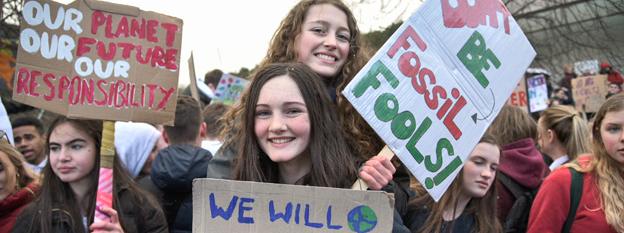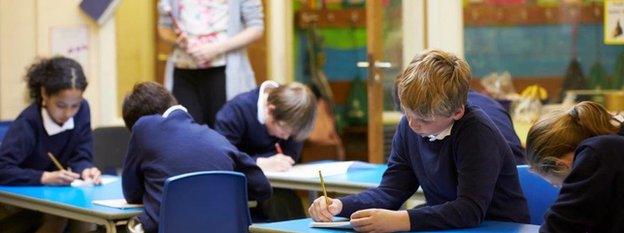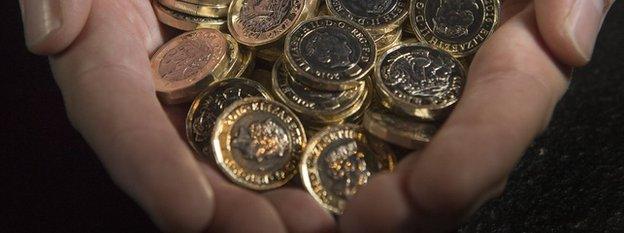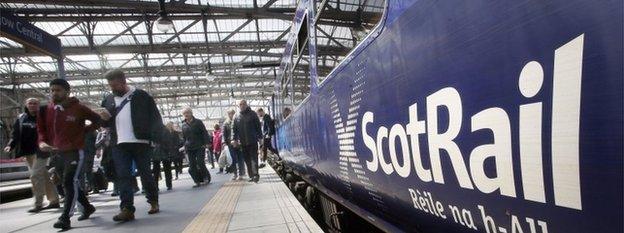Summary of Scottish budget 2020-21: Key points at a glance
- Published
Public Finance Minister Kate Forbes has outlined the Scottish budget for 2020-21. Here are the key points from her speech to MSPs.
Environment and Climate change

A total of £461.8m will be spent on the environment, climate change and land reform - an increase from £426.6m
Marine priorities include to safeguard and monitor marine and fisheries activity in Scotland's seas, coasts, rivers and ports - with spending increasing to £65.5m
Spending on environmental services will go up from £134.1m to £157.1m
A substantial increase in spending on climate change and Land Managers Renewables Fund will take it to £30.3m

Tax rates

On income tax, the budget makes no changes to rates, and does not introduce or remove any bands but the thresholds where the two upper rates kick in will not rise with inflation
A starter rate of 19% will be charged on earnings between £12,501 and £14,585
The Scottish basic rate of 20% will then be paid on earnings up to £25,158
An intermediate rate of 21% will then apply up to £43,430, with a higher rate of 41% and a top rate of 46% for those earning more than £150,000
Land and Buildings Transaction Tax (LBTT) for residential property will be unchanged

NHS and social care

Frontline services funding for NHS boards will increase by £333m, with a further £121m increase for improving patient outcomes
Spending on general medical services will top one billion for the first time, with a total spend of £1,035.8m
Additional support for social care goes up from £120m to £220m
The total Scottish budget for health and sport will be just over £15bn

Childcare and education

Teachers leaving the profession outnumber new recruits, the figures suggest
Total education and skills will increase to £3.5bn
For colleges and universities, there is a further £43.7m of funding
£25m will be provided to support Gaelic education
The children and families budget will increase from £123.9m to £149.7m
The early learning and childcare programme will fall slightly to £39.8m

Business and economy

The Scottish National Investment Bank to be operational in 2020, supported by the £150m Building Scotland Fund and a further £220m in direct investment in 2020-21
Research and development spending will continue to increase towards the 2025 target of £1.7bn, doubling spending over a 10-year period
Total spending on finance, economy and fair work will increase from £5,336.8m to £6,271.6m

Communities and local government

Total Scottish government funding for local government will be £11,832.5m
The Affordable Housing Supply Programme spending will increase to £843m
Spending on measures to reduce fuel poverty and improve energy efficiency will increase from £119.6m to £137.1m
The Scottish Child Payment which will be introduced paying £10 per week, per child every four weeks to eligible families with children under six
Spending on the third sector will fall slightly to £24.6m

Transport, Infrastructure and Connectivity

Spending on rail services will go up from £989m to £1,259.1m
Motorways and trunk road spending will fall from £833.1m to £748.9m
Funding of £49.6m has been allocated to the troubled Ferguson Marine
Spending on digital connectivity will increase from £32.9m to £63.4m

Justice

Total spending on justice, which includes the police, court system and fire service, will be £2,831.5m
The Scottish Police Authority funding will go up from £1,180.1m to £1,222.3m
Spending on the fire service will increase from £327.2m to £333.3m
Extra spending on community justice of almost £7m will take its budget to £44m
Legal Aid spending will be unchanged at £137.5m

Economic forecasts

Scottish GDP is forecast to grow by 1% in 2020 and by 1.1% in 2021
Employment is expected to remain broadly level at 2.67 million, with an unemployment rate of 4%
Average earnings are forecast to grow by 3% in 2020 and by 3.1% in 2021
The projections are based on the Scotland's Economic and Fiscal Forecasts, external document drawn up by the Scottish Fiscal Commission